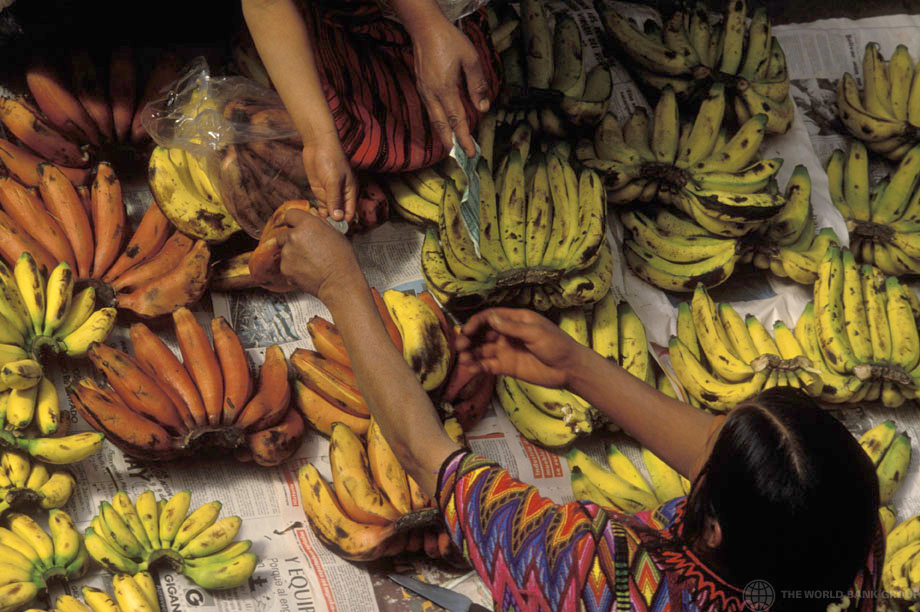A robust food production system alone cannot guarantee food availability. The FAO estimates that around one-third of all food is lost or wasted between farm and fork, a value whose magnitude is debated but has catalysed considerable attention and many calls to action, including a new Sustainable Development Goal by the United Nations. At the recent 2nd International Conference on Global Food Security, researchers from across the globe—ranging from South America to South Asia to Sub-Saharan Africa to Europe—presented work on food loss and waste (FLW) from their respective regions.

Many of the presentations focused on quantifying FLW at particular levels of the value chain; all suggested that levels of loss and waste are considerably high. We learned from Ofira Ayalon and co-authors at the University of Haifa that 178,000 tons of edible agricultural surplus are left in fields by farmers in Israel every year, an issue they are working to rectify by assisting farmers with better planning and diverting remaining excess to food banks. Losses are also thought to be quite high as food moves between locations. Joao Gilberto M. dos Reis from Paulista University in Brazil discussed the loss of life and weight of pigs in transport between the farm and the slaughterhouse, a major concern for Brazil, the fourth largest pork producer in the world. His results show that transporting pigs distances greater than 100 km had major loss implications.
Losses continue to accumulate further along the value chain. K.F. Omotesho and colleagues from the University of Ilorin in Nigeria estimated the size of leafy-vegetable losses in Kwara State, Nigeria. These researchers found that vegetable losses predominantly occur at wholesale due to poor post-harvest handling and lack of processing facilities. The retail level is also a significant source of loss. Lisa Mattsson from Karlstad University in Sweden showed that 1.9 percent of fresh fruit and vegetables are thrown away at the supermarket level in Sweden, comparing those values with established waste quotas.
Most researchers relied on these subjectively “high” values as a call-to-arms in eliminating FLW. But, as K.F. Omotesho pointed out, we need to better understand the drivers behind these losses before moving directly to mitigating interventions.
A few interesting papers tackled some of the lesser-considered drivers. Orjon Xhoxhi studied the power dynamics between farmers and intermediaries in horticulture value chains in Albania and Turkey, finding that imbalances were a major driver of loss up the value chain (related work here). Aditya Shrinivas, a PhD student at the University of Illinois, found a high rate of precautionary savings on the part of consumers in India, an issue that could be tackled with better storage facilities to help smooth consumption. Rohit Sharma from the Indian Institute of Plantation Management Bangalore explained that although India is the second largest producer of wheat in the world, the country still has major problems regarding waste along the supply chain, particularly due to poor logistics and a lack of knowledge about consumer demand. Both of these issues could be solved with the use of better data and logistics parks.
Researchers also studied the effectiveness of interventions already in place or proposed new ones. “Social innovations” was a theme across various discussions. Barbara Redlingshoefer from France’s INRA utilised the multi-sectoral expertise of twenty researchers to assess the potential for socio-technological innovations in food waste prevention, as well as to determine the potential of cities to adopt “zero waste” systems. Her research revealed nine such strategies, albeit trialled only on a small-scale. During an interactive workshop café session, Karin Östergren, helped conference delegates brainstorm ideas for other FLW-reducing social innovations, drawing on her work.
Yet as MIT graduate students Emily Gooding and Mark Brennan, even great ideas for reducing FLW—including improved post-harvest storage technology in Uganda, as they study—can incur hiccups in implementation. These researchers found that sourcing metal silos from local artisans, a fantastic idea for also building an in-country supply chain, caused major delays due to high levels of risk aversion and capacity constraints, ultimately hindering timely use on-farm. They suggested innovative contracting agreements that could mitigate these challenges.
Researching FLW can be a difficult task due to myriad data challenges (e.g., the most relevant data is often owned by private firms), widespread confusion about meaningful distinctions between food loss and food waste, and the inability to track an intervention along various levels of the supply chain. Nevertheless, the research community will continue to work towards a better understanding of the extensiveness of the problem and its implications for global food security. Indeed the few days engaging in discussion around this topic has left us all more thoughtful about the role we can play in addressing this issue.
*Update: This post was cross-posted on Keiron Audain’s Pro-velopment blog.


It’s so sad that we are talking about food waste in case that there are so many places where have deficit of food. The people have to be more aware and more concern about how much food they are wasting! Thanks for the great article!